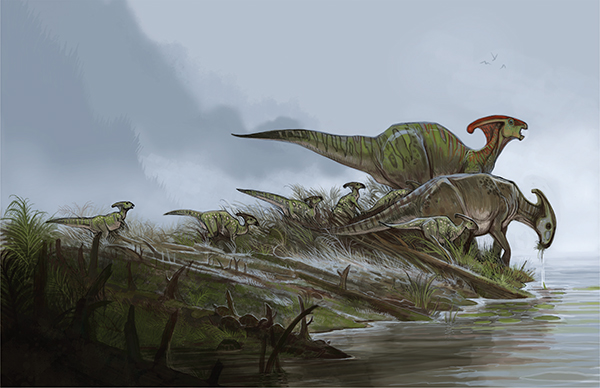

PRONUNCIATION | PAR-a-sore-OL-oh-fus
SPECIES | Parasaurolophus walkeri
NAME | Near Crested Lizard
FAMILY | Hadrosauridae
PERIOD | Cretaceous
DIET | Herbivore
SIZE | 30 feet (9m)
YEAR DISCOVERED | 1922
The parasaurolophus is a member of the Hadrosauridae family and was common throughout the Cretaceous period. Commonly referred to as duck-billed dinosaurs, these large social animals are thought to have been herbivores that grazed in massive herds. Group fossil discoveries suggest herd migration, including forded river crossings, and that they may have been in close contact during a disaster that formed the fossil deposits.
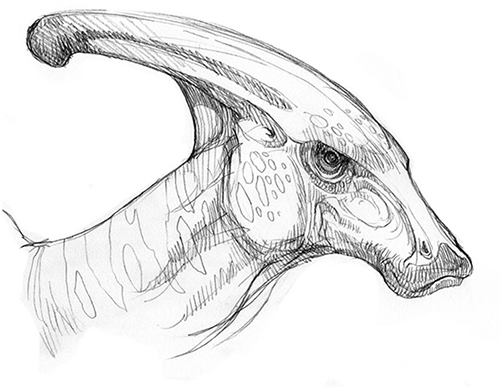
The silhouette of the parasaurolophus is uniquely identifiable by its hollow bony crest that can reach up to 6 feet (2m) in length. The crest was a long hollow sounding chamber for calls. With lungs the size of an office desk, parasaurolophus could have mate calls as loud as a fog horn and heard for miles. A whole herd calling and honking at the same time would have been deafening. Whether there was a fleshy membrane draped from the crest is unknown and open to the artist’s interpretation.
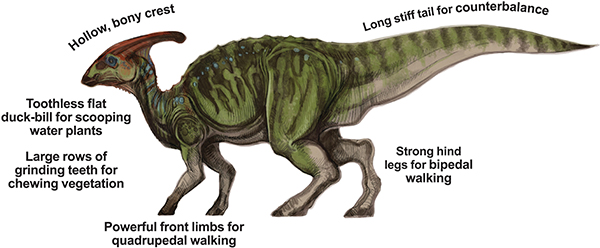
The parasaurolophus is most easily identified by its large head crest, which paleontologists have deduced was a sounding chamber to create distinct and powerful horn calls. As with modern day birds, these calls were likely used for communication between individuals as well as mating.

Though these large hadrosaurs were able to move on four legs to graze, they could also run on their two powerful back legs.
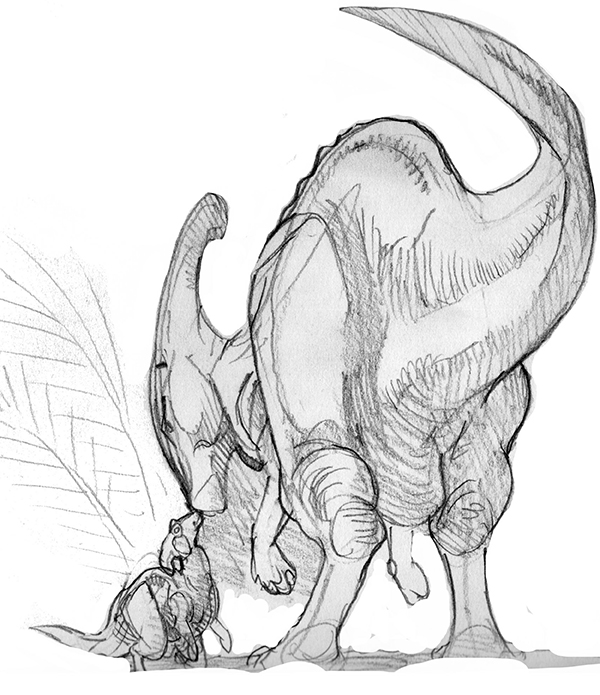
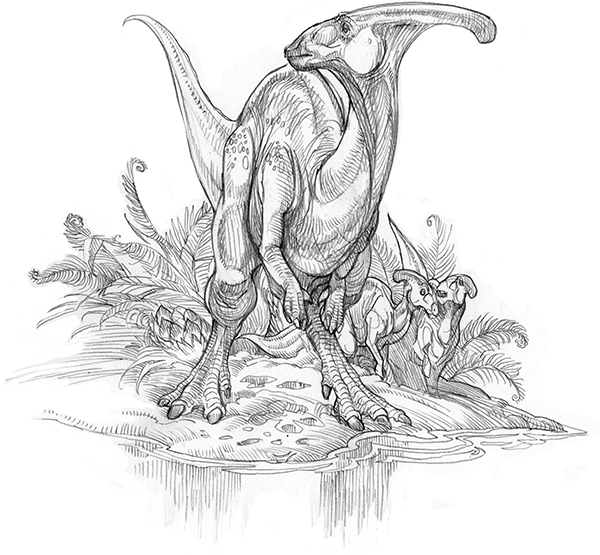
It is reasonable to assume that like modern birds, parasaurolophus congregated in large flocks. Like penguins, young hatchlings could discern their own parents’ calls out of the hundreds of individuals in a herd.